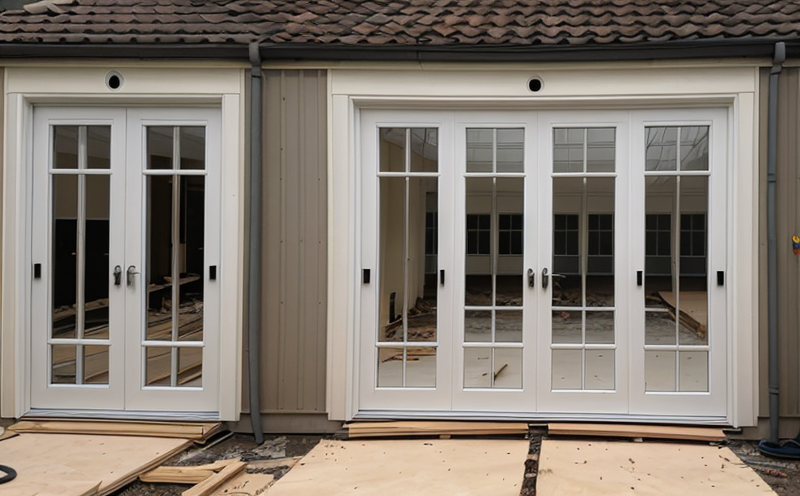Fire Resistance Testing of Fireproofing on Doors and Frames
The fire resistance testing of fireproofing on doors and frames is a critical component in ensuring that buildings comply with stringent fire safety regulations. This test evaluates the integrity, stability, and insulation properties of fireproofing materials applied to doors, windows, and partitions under controlled laboratory conditions.
Fireproofing is designed to provide structural support for specified periods during fires, thereby protecting building occupants from heat, flames, and toxic smoke. In the case of doors and frames, fireproofing ensures that these critical components remain intact, allowing safe evacuation routes and preventing the spread of fire between compartments within a building.
This testing is particularly important in high-risk areas such as hospitals, schools, and public buildings where the safety and well-being of individuals are paramount. The testing process involves subjecting specimens to intense heat and flame exposure for extended periods. Specimens undergo various conditions including radiant heat from gas burners and vertical flame impingement tests.
The fire resistance test is conducted following international standards such as ISO 14693-2, ASTM E1968, and EN 1363-3. These standards specify the procedures for testing the ability of a door or frame with applied fireproofing to maintain its structural integrity under defined thermal exposure conditions.
The specimen preparation involves carefully selecting doors and frames that represent real-world applications in terms of size, material composition, and design. Fireproofing materials are typically applied evenly across the entire surface area of the doors and frames according to manufacturer guidelines or specified thickness requirements.
After applying fireproofing, the specimens are subjected to a series of rigorous tests aimed at simulating real-fire scenarios. These tests include but are not limited to:
- Thermal Exposure: Specimens are exposed to radiant heat from gas burners.
- Flame Impingement Tests: Vertical flames impinge on the specimens to assess their resistance to fire penetration.
- Structural Integrity Checks: Post-test inspections are conducted to determine if there is any visible damage or failure in maintaining structural integrity.
- Smoke and Toxic Gas Release: Monitoring of smoke and toxic gas release during the test ensures that fireproofing also meets flue gas toxicity requirements.
The results of these tests are meticulously recorded, analyzed, and reported. Compliance with specified performance criteria is determined based on whether the specimen maintains its structural integrity for a predetermined time period without compromising safety standards.
Understanding the intricacies of fire resistance testing helps stakeholders appreciate its importance in enhancing building safety. By adhering to strict protocols and using high-quality materials, facilities can achieve compliance with regulatory requirements while safeguarding lives against potential hazards associated with fires.





